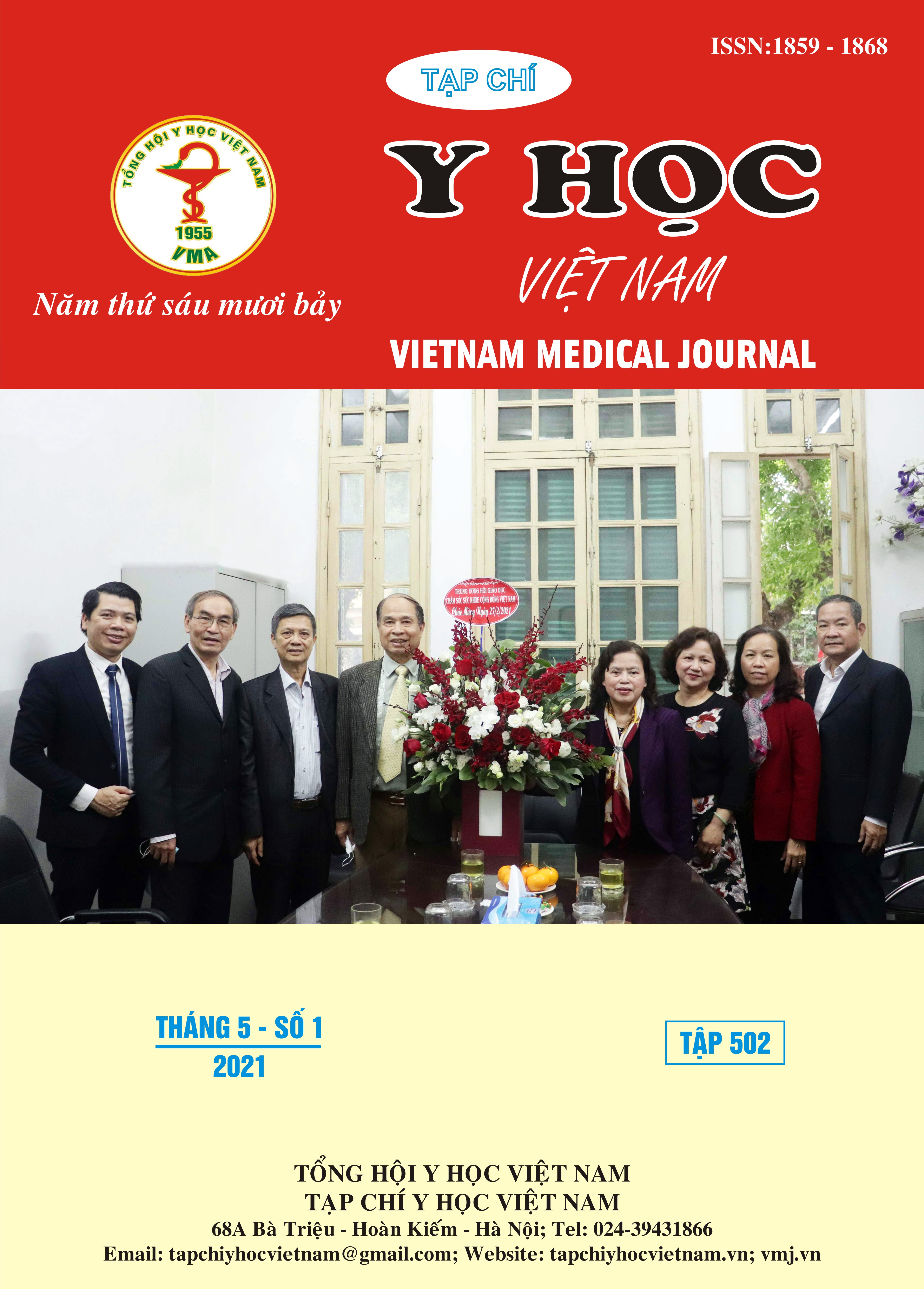PERIODONTAL DISEASES AND RELATED FACTORS IN CHILDREN WITH PRIMARY NEPHROTIC SYNDROME
Main Article Content
Abstract
Nephrotic syndrome (NS) is the most common glomerular disease in children with an annual incidence rate of 2-7/100,000 children out of a total morbidity rate of 16/100,000. In Vietnam (1981-1990), 1414 children with NS were admitted to the National Hospital of Pediatrics, accounting for 46,6% of the total number of patients in the Department of Nephrology - Urology, of which 1358 children were diagnosed with primary NS (91,0 %). According to the literature, patients with nephrotic syndrome have the effect of destroying hard tissue and surrounding parts after havingused drugs in a long-term treatment. In addition, regular hospitalization and specific diet also affect the care and prevention of oral diseases. This study aims to describe the periodontis diseases of children with primary nephrotic syndrome and some related factors at the National Hospital of Pediatrics. The method of cross-sectional descriptive studies was performed in a group of children diagnosed as primary nephrotic (407 children). Results of research as follow: the majority of children with gingivitis and hypertrophic gingivitis, tartar most commonly seen in children 13-18 years old, there is a relationship between the duration of the disease, the number of relapses, the form of the disease, the history of the disease use of drugs to treat gingivitis and gingivitis, hypertrophic gingivitis in the study group.
Article Details
Keywords
nephrotic syndrome, gingivitis, hypertrophic gingivitis, tartar
References
2. Lê Nam Trà, Trần Đình Long, Đỗ Bích Hằng. Tình hình bệnh thận, tiết niệu của trẻ em được điều trị tại Viện Nhi 1981-1990. Kỷ Ếu Công Trình Nhi Khoa. Published online 1994:161-162.
3. Blue C, Isringhausen K. Raising Oral Health Awareness Among Nephrology Nurses. 2011;85(2):7.
4. Mihalaş E, Matricala L, Chelmuş A, Gheţu N, Petcu A, Paşca S. The Role of Chronic Exposure to Amoxicillin/Clavulanic Acid on the Developmental Enamel Defects in Mice. Toxicol Pathol. 2016;44(1):61-70. doi:10.1177/ 0192623315610822
5. Angelova ST. Oral Health in Children Suffering from Pyelonephritis and Nephrotic Syndrome. J Healthc Hyg. 2017;1(1). Accessed March 12, 2020. https://www.imedpub.com/abstract/oral-health-in-children-suffering-from-pyelonephritis-and-nephrotic-syndrome-21261.html
6. Babu NSV, Jana S. Assessment of Oral Health Status in Children Suffering from Nephrotic Syndrome. 2014;2(2):5.
7. Ulu Güzel KG, Yilmaz D, Abacigil F, PİRİNÇCİ S. Oral Aspects in Children with Nephrotic Syndrome - ProQuest. Published 2018. Accessed March 31, 2020. https://search.proquest.com/ openview/abefb6b2e8f40fb85a157c5240e86aab/1?pq-origsite=gscholar&cbl=236264.
8. Weraarchakul W, Weraarchakul W, Wisanuyotin S, Panamonta M. Enamel defect and gingival enlargement in pediatric patients with kidney disease at Srinagarind Hospital, Khon Kaen University, Thailand. J Med Assoc Thail Chotmaihet Thangphaet. 2014;97 Suppl 10:S75-81.


